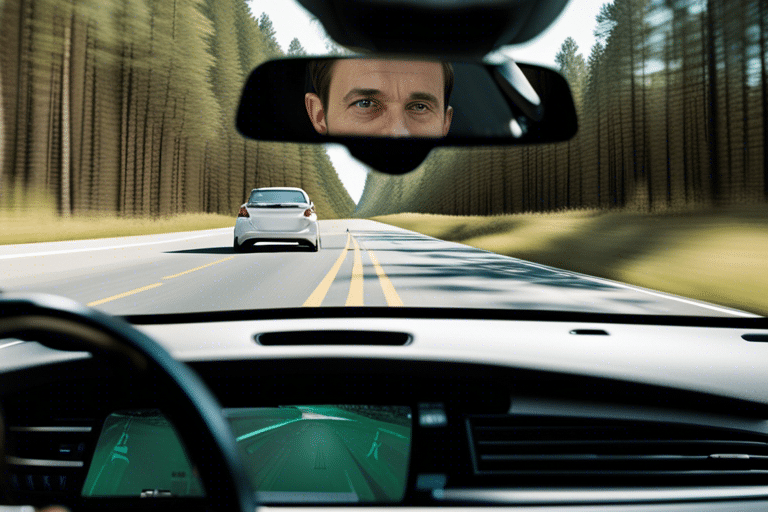K53 Defensive Driving Maneuvers
As a learner driver, it’s important that you know how to handle your car defensively. The skills you learn will not only help you pass your K53 licence test, but could also save your life one day. In this article, we’ll be looking at some advanced k53 defensive driving maneuvers that you may not have seen before.
The vehicle dynamics and physics involved in k53 defensive driving are extremely complex, and we can’t cover every possible scenario here. However, we’ll look at some of the most important techniques that you need to know in order to stay safe on the road.
How to Use Mirrors for Defensive Driving
One of the most important aspects of defensive driving is using your mirrors effectively. You should always be aware of what’s happening around you, and your mirrors are the best way to do this.
Table Of Content.
- Introduction to k53 Defensive Driving
- Mirror Checks and Positioning
- Lane Changes and Merging
- Speed and Braking
- Intersections and Roundabouts
Introduction to k53 Defensive Driving
Defensive driving is a crucial skill that every driver should possess to enhance safety on the road. This section will provide you with a comprehensive understanding of k53 defensive driving basics and highlight the significant benefits it offers.
Defensive Driving Basics:
– Maintain a safe following distance: Always keep a safe distance from the vehicle in front of you to allow yourself enough time to react in case of any sudden stops or emergencies.
– Anticipate potential hazards: Stay alert and scan the road ahead, constantly looking out for potential hazards such as pedestrians, cyclists, or other drivers who might be driving recklessly.
– Use your mirrors effectively: Properly adjust your side and rearview mirrors to ensure maximum visibility of your surroundings. Regularly checking your mirrors while driving is crucial to stay aware of the traffic behind you.
– Minimize distractions: Avoid distractions like texting, phone calls, or eating while driving. Keep your complete focus on the road and remain attentive to your surroundings.
Benefits of k53 Defensive Driving:
Defensive driving goes beyond just following traffic rules and regulations. It enables you to proactively identify potential risks and take necessary precautions to prevent accidents. The key benefits of practicing defensive driving include:
1. Improved reaction time: By being aware of your surroundings and potential hazards, you can react quickly to unexpected situations, reducing the chances of being involved in a collision.
2. Lower insurance premiums: Many insurance companies offer discounts to drivers who have completed defensive driving courses, as they are considered less risky on the road.
3. Enhanced confidence: Defensive driving equips you with the skills and knowledge to handle challenging road conditions and difficult driving scenarios, boosting your confidence behind the wheel.
4. Personal safety: Most importantly, defensive driving prioritizes personal safety, protecting not only yourself but also the passengers and other road users around you.
As you embark on this journey to master the art of defensive driving, remember that it is an ongoing process. Stay committed to continuously improving your skills and staying up to date with the latest driving techniques.
key Takeaway: Defensive driving is a crucial skill that enhances road safety. By maintaining a safe distance, anticipating hazards, using mirrors effectively, and minimizing distractions, you can significantly reduce the risk of accidents. Practicing defensive driving offers numerous benefits, including improved reaction time, lower insurance premiums, enhanced confidence, and personal safety.
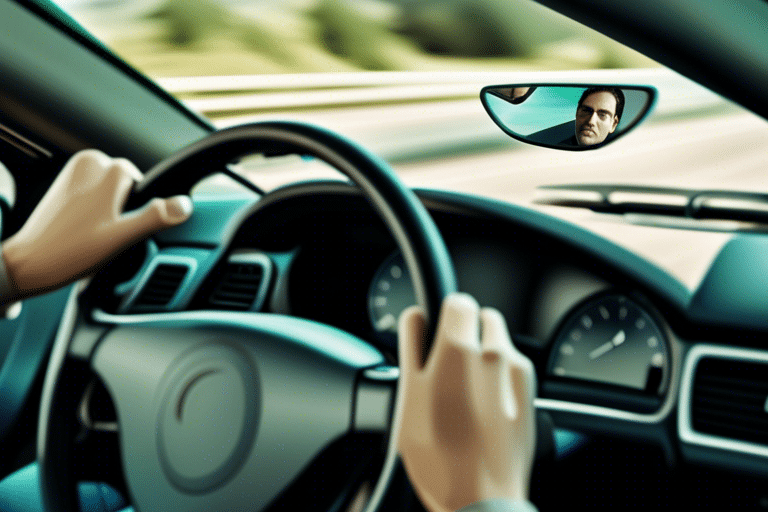
k53 Defensive Driving Basics
Driving defensively is a crucial skill that every driver should possess, especially when it comes to advanced maneuvers on the road. By adopting defensive driving techniques, drivers can anticipate potential hazards, avoid accidents, and ultimately protect themselves and others on the road. Here are some key defensive driving basics to keep in mind:
1. Maintain a Safe Following Distance: Always maintain a safe distance from the vehicle in front of you. This provides you with enough time to react in case of sudden stops or any other unexpected situations.
2. Stay Alert and Observant: Pay attention to your surroundings at all times. Constantly scan the road ahead, check your mirrors regularly, and be aware of any potential threats or hazards.
3. Anticipate Other Drivers’ Actions: Try to predict the actions of other drivers on the road. Look for signs of erratic driving behavior, such as swerving or sudden lane changes, and be prepared to react accordingly.
4. Avoid Distractions: Distracted driving is a major cause of accidents. Avoid using your phone, eating, or engaging in any other activity that takes your attention away from the road.
5. Observe Traffic Laws: Follow all traffic laws, including speed limits, stop signs, and traffic signals. Adhering to these regulations not only keeps you safe but also ensures a smooth flow of traffic.
6. Be Mindful of Weather Conditions: Adjust your driving behavior based on weather conditions. Reduce speed, increase following distance, and use appropriate signals when necessary, such as turning on your headlights in foggy or rainy weather.
By practicing these k53 defensive driving basics, you can significantly reduce the risks associated with driving and become a safer and more responsible road user.
key Takeaway: K53 Defensive driving basics are essential for all drivers to ensure their safety and that of others on the road. By maintaining a safe distance, staying alert, anticipating other drivers’ actions, avoiding distractions, following traffic laws, and adjusting for weather conditions, drivers can greatly minimize the risk of accidents and drive defensively.
Benefits of k53 Defensive Driving
Defensive driving is not just a skill for passing the K53 licence test; it is an essential practice that can greatly improve road safety and reduce the risk of accidents. By adopting a defensive driving mindset, drivers can protect themselves, their passengers, and others on the road. Here are some key benefits of practicing defensive driving:
1. Increased Awareness: Defensive driving teaches drivers to be more aware of their surroundings and anticipate potential hazards. This includes being mindful of other drivers, pedestrians, and changing road conditions. By staying alert and observant, drivers can spot potential dangers early and take appropriate action to avoid accidents.
2. Improved Reaction Time: Defensive driving emphasizes the importance of maintaining an adequate following distance from the vehicle in front. This allows drivers to have enough time to react and brake safely, reducing the risk of rear-end collisions. By being proactive instead of reactive, drivers can minimize the impact of unexpected events.
3. Reduced Aggressive Driving Behavior: Defensive driving promotes courteous and considerate behavior on the road. Drivers learn to control their emotions and avoid aggressive actions such as tailgating, excessive speeding, or aggressive lane changes. This not only reduces the likelihood of road rage incidents but also contributes to a more harmonious driving environment.
4. Enhanced Hazard Recognition: Defensive driving teaches drivers to identify and respond to different types of road hazards, such as potholes, debris, or adverse weather conditions. By being aware of these potential dangers, drivers can adjust their speed, make necessary lane changes, or take evasive actions to maintain safety.
5. Lower Insurance Premiums: Many insurance companies offer discounted rates to drivers who have completed defensive driving courses. This is because defensive driving is associated with lower accident rates and helps mitigate potential risks. By investing in defensive driving skills, drivers can not only protect themselves but also save money on insurance premiums.
By understanding and implementing the principles of defensive driving, drivers can significantly reduce the risk of accidents and create a safer road environment for everyone.
key Takeaway: Practicing k53 defensive driving offers numerous benefits, including increased awareness, improved reaction time, reduced aggressive driving behavior, enhanced hazard recognition, and potential insurance premium discounts.
Mirror Checks and Positioning
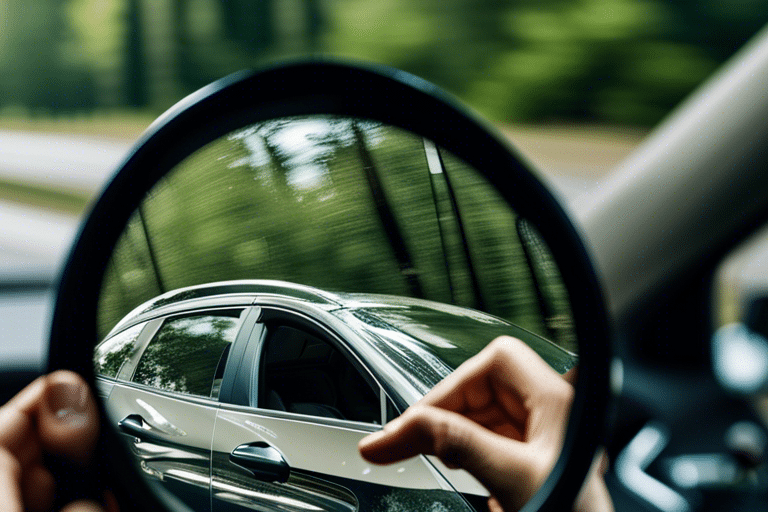
Mirror Checks and Positioning
Properly positioning your vehicle and using mirrors effectively are crucial skills for safe and defensive driving. Here are some key points to keep in mind:
1. How to Properly Position Your Vehicle:
– Align your vehicle within the lane, ensuring you have equal space on both sides.
– Maintain a safe distance from other vehicles, allowing room for sudden maneuvers or emergencies.
– Position your vehicle to have maximum visibility of the road ahead and your blind spots.
2. Proper Use of Mirrors:
– Regularly check your rearview mirror to be aware of the traffic behind you.
– Use your side mirrors to monitor vehicles approaching from the sides.
– Adjust the mirrors to minimize blind spots, ensuring you can see as much of the road as possible.
3. Shoulder Checks:
– Perform shoulder checks by quickly glancing over your shoulders to check blind spots before changing lanes or making maneuvers.
– Shoulder checks are crucial as they provide a physical confirmation of what your mirrors may have missed.
Remember, mirror checks and proper positioning are essential for maintaining awareness of your surroundings and minimizing blind spots. By consistently practicing these habits, you enhance your ability to anticipate and respond to potential hazards on the road.
“Always stay one step ahead by anticipating and adjusting your position on the road.” – Defensive Driving Pro Tip
key Takeaway: Proper mirror usage and vehicle positioning are fundamental k53 defensive driving skills that enhance your awareness and minimize blind spots on the road.
How to Properly Position Your Vehicle
Proper positioning of your vehicle is crucial for maintaining control and maximizing your safety on the road. Here are some key tips to follow:
1. Center of the Lane: When driving, try to position your vehicle in the center of your lane. This provides you with adequate space on both sides and reduces the risk of collisions with other vehicles or obstacles.
2. Maintain Proper Distance: Keep a safe distance from the vehicle in front of you. The general rule of thumb is to maintain a two-second following distance, which allows you enough time to react and brake if necessary. Increase this distance in adverse weather conditions or when driving at higher speeds.
3. Avoid Blind Spots: Be aware of blind spots, which are areas around your vehicle that are not visible through your mirrors. Adjust your mirrors properly to minimize blind spots, and always perform shoulder checks before changing lanes or making turns.
4. Position for Turns: When preparing for a turn, position your vehicle in the appropriate lane well in advance. Use your turn signals to indicate your intentions and check for any oncoming traffic or pedestrians. Positioning your vehicle correctly helps other drivers anticipate your movements and ensures a smooth and safe turn.
5. Parking and Stopping: When parking or stopping, follow the designated parking rules and guidelines. Ensure that your vehicle is properly aligned within the parking space and leave enough distance between your vehicle and the surrounding cars.
Remember, proper positioning of your vehicle helps you maintain control and visibility on the road, reducing the chances of accidents and ensuring a safer driving experience.
key Takeaway: Positioning your vehicle correctly is crucial for maintaining control and safety on the road. Follow these tips to ensure proper positioning and minimize the risk of accidents.
Proper Use of Mirrors
When it comes to defensive driving, using your mirrors properly is crucial for maintaining situational awareness and reducing blind spots. Here are some key tips for effectively using your mirrors:
1. Adjust the mirrors correctly: Before you start driving, make sure your side and rearview mirrors are properly adjusted. The side mirrors should be angled so that you can see a sliver of your own vehicle and minimize blind spots. The rearview mirror should provide a clear view of the road behind you.
2. Check your mirrors regularly: Make it a habit to check your mirrors every few seconds, especially before changing lanes, merging, or making turns. Keep in mind that using your mirrors alone is not enough – always physically turn your head and glance over your shoulder to check blind spots.
3. Use the mirrors in combination: Remember that each mirror serves a different purpose. When changing lanes, use your side mirrors to check for vehicles in the adjacent lanes. Then, quickly check your rearview mirror to ensure the lane you’re moving into is clear.
4. Keep scanning the mirrors: Continuously scanning your mirrors allows you to anticipate potential hazards and react in a timely manner. By monitoring the movement of vehicles behind you, you can stay alert to any sudden changes in traffic patterns.
5. Watch for signals and blind spots: Look for other drivers’ signals through their mirrors or by observing their vehicle’s movements. Be cautious of blind spots created by large vehicles, such as trucks or buses, and adjust your mirrors accordingly to minimize them.
“Using your mirrors effectively is essential for maintaining awareness of your surroundings and reducing the risk of collisions.”
key Takeaway: Properly utilizing mirrors is a crucial aspect of k53 defensive driving that helps minimize blind spots and maintain situational awareness.
Lane Changes and Merging
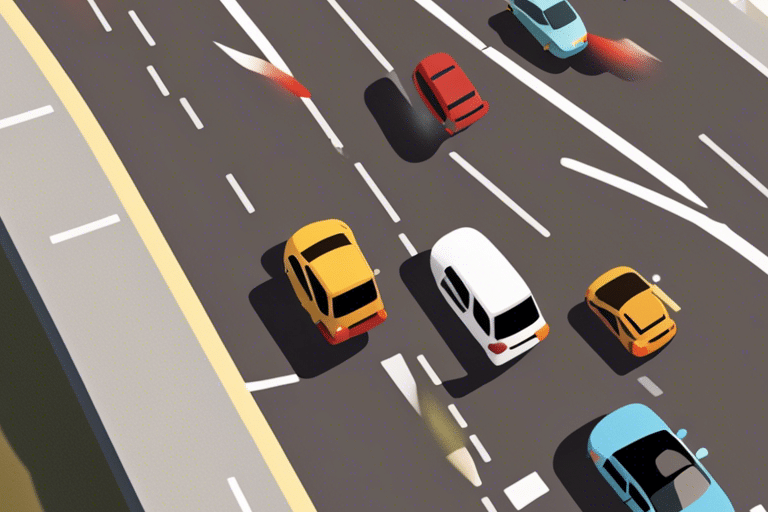
Lane Changes and Merging
When it comes to lane changes and merging, practicing defensive driving techniques is crucial for maintaining safety on the road. Here are some key tips to keep in mind:
1. How to Move Safely Between Lanes:
– Check your mirrors and blind spots before changing lanes.
– Use your turn signal to indicate your intention to change lanes.
– Make sure there is enough space in the desired lane before making your move.
– Gradually steer into the new lane, while maintaining a consistent speed.
2. Merging Properly Into Traffic:
– When entering a highway or merging lane, match your speed to that of traffic.
– Use your turn signal to indicate your intention to merge.
– Find a gap in the traffic and merge smoothly, without causing other drivers to brake or swerve.
– Be aware of drivers around you and adjust your speed accordingly to maintain a safe distance.
Remember, proper lane changes and merging require attentiveness and good judgment. Anticipating the movements of other drivers and being patient on the road will help ensure a safe driving experience for everyone involved.
“Some drivers underestimate the importance of signaling their lane changes, which can lead to potential accidents.” – Driving Safety Magazine
key Takeaway: Practicing proper lane changes and merging techniques is essential for maintaining safety on the road and preventing accidents.
How to Move Safely Between Lanes
Moving between lanes safely is a crucial skill for every driver, especially when it comes to defensive driving. Here are some key tips to help you navigate lane changes with confidence:
1. Check your blind spots: Before changing lanes, always check your blind spots – the areas that your mirrors may not cover. Turn your head and glance over your shoulders to ensure there are no vehicles in your blind spots.
2. Use your signals: Signaling your intention to change lanes is essential for alerting other drivers of your actions. Activate your turn signal well in advance to give drivers around you enough time to react.
3. Plan your move: Assess the traffic flow and find a suitable gap in the lane you wish to move into. It’s important to choose a gap that allows you to merge smoothly without causing disruptions or forcing others to brake suddenly.
4. Gradual steering: When changing lanes, make smooth and gradual steering adjustments. Abrupt movements can startle other drivers and may even result in an accident. Maintain a steady and predictable path as you merge.
5. Maintain speed: While changing lanes, it’s essential to match your speed with the flow of traffic in the lane you are entering. Avoid drastically slowing down or speeding up, as that can create hazards and result in collisions.
6. Stay aware: Continuously scan the road ahead and check your mirrors to stay aware of the traffic around you. Look out for any sudden changes in other vehicles’ positions and adjust your actions accordingly.
Remember, patience and cautiousness are crucial when changing lanes. By following these guidelines, you can enhance your lane-change maneuvers and drive defensively.
key Takeaway: Moving safely between lanes involves checking blind spots, using signals, planning your move, making gradual steering adjustments, maintaining speed, and staying aware of the traffic around you. These actions contribute to a defensive driving approach and help ensure a safe and efficient lane change experience.
Merging Properly Into Traffic
When it comes to merging into traffic, it’s essential to follow proper techniques to ensure a safe and smooth transition. Here are some key tips to keep in mind:
1. Signal your intentions: Before merging, use your turn signal to indicate your intention to other drivers. This allows them to adjust their speed and create space for you to merge.
2. Check your blind spots: Always check your blind spots before merging. This includes looking over your shoulder and using your side mirrors to ensure there are no vehicles in your intended merging lane.
3. Timing is crucial: Wait for a sufficient gap in traffic before attempting to merge. Trying to merge when there isn’t enough space can lead to dangerous situations. Be patient and wait for a suitable opening.
4. Match the speed of traffic: As you prepare to merge, adjust your speed to match that of the vehicles already on the road. This helps you merge more smoothly and avoids disrupting the flow of traffic.
5. Yield if necessary: If there is heavy traffic or limited merging space, be prepared to yield and wait for a better opportunity. It’s better to be cautious and patient rather than forcing your way into traffic.
6. Maintain a steady speed: Once you’ve successfully merged, maintain a steady speed to ensure a safe distance from other vehicles. Avoid sudden acceleration or deceleration, as it can lead to accidents.
Remember, merging into traffic requires attention, patience, and proper execution of defensive driving techniques. By following these guidelines, you can navigate the merging process safely and efficiently.
key Takeaway: Merging into traffic requires signaling, checking blind spots, timing, matching the speed of traffic, yielding if necessary, and maintaining a steady speed to ensure a safe and smooth transition.
Speed and Braking the k53 defensive driving way
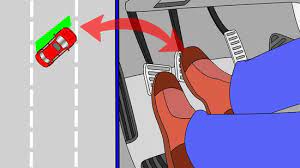
Speed and Braking:
When it comes to advanced defensive driving maneuvers, understanding how to adjust your speed and execute proper braking techniques is crucial. Here are some key factors to consider:
1. Adjusting Speed for Conditions:
– It’s important to be aware of external factors that may require you to adjust your driving speed. This includes weather conditions, road surface conditions, and traffic congestion.
– Reduce your speed when driving in adverse weather conditions such as rain, fog, or snow to maintain better control of your vehicle.
– Slow down and maintain a safe following distance when driving on wet, icy, or slippery roads.
– Be cautious when approaching road construction areas or school zones, as speed limits may be reduced.
2. Emergency Braking Maneuvers:
– Familiarize yourself with emergency braking techniques to be prepared for unexpected situations on the road.
– Practice threshold braking, which involves applying steady pressure to the brake pedal to prevent the wheels from locking up. This allows you to maintain control of the vehicle while stopping quickly.
– Remember to keep both hands on the steering wheel while applying the brakes to maintain stability and control.
Remember, maintaining an appropriate speed for the conditions and being proficient in emergency braking techniques are vital for safe and defensive driving.
key Takeaway: Adjusting your speed according to road conditions and mastering emergency braking techniques are essential for advanced defensive driving maneuvers.
Adjusting Speed for Conditions
One of the crucial aspects of defensive driving is being able to adjust your speed according to the road conditions. By doing so, you can minimize the risks associated with driving in different situations. Here are some important considerations when it comes to adjusting speed for varying conditions:
1. Weather Conditions: Weather plays a significant role in determining the appropriate speed on the road. If it’s raining, snowing, or foggy, reducing your speed is essential to maintain control of your vehicle and improve visibility. Remember, slower speeds provide more time to react to potential hazards.
2. Road Surface: Different road surfaces can impact your vehicle’s traction and handling. For example, wet or icy roads may require slower speeds to prevent skidding or sliding. Likewise, gravel or uneven surfaces demand cautious driving to avoid loss of control. Adapting your speed accordingly ensures safe navigation through these conditions.
3. Traffic Density: The volume of traffic also affects your speed choices. In heavy traffic, reducing speed allows more time to react to sudden stops or lane changes by other drivers. Maintaining a safe distance from the vehicle ahead and avoiding tailgating supports smooth driving and minimizes the risk of collisions.
4. Construction Zones: Construction zones often have reduced speed limits due to potential hazards like narrow lanes, uneven surfaces, or workers on the road. Always adhere to posted speed limits in construction areas and stay alert for signs indicating changes in speed.
Remember, adjusting your speed for conditions is a key component of k53 defensive driving, promoting safety for both yourself and other road users. By becoming aware of your surroundings and modifying your speed accordingly, you can significantly reduce the risk of accidents and keep everyone safe on the road.
key Takeaway: Adjusting your speed for road conditions is crucial in k53 defensive driving, ensuring your safety and the safety of others. By considering factors such as weather conditions, road surfaces, traffic density, and construction zones, you can make informed decisions about the appropriate speed to maintain on the road.
Emergency Braking Maneuvers
When it comes to defensive driving, knowing how to perform emergency braking maneuvers can be a lifesaver. These techniques are crucial for avoiding collisions or minimizing the impact of a sudden hazard on the road. Here are some key points to keep in mind:
1. Maintain proper following distance: Always practice the 3-second rule, maintaining a safe distance from the vehicle ahead. This gives you enough time to react and brake in case of an emergency.
2. Apply steady and firm pressure: In the event of an unexpected obstacle, avoid slamming on the brakes. Instead, apply steady and firm pressure to the brake pedal. This allows the weight of the vehicle to shift forward, maximizing the effectiveness of the brakes.
3. Maintain control of the steering wheel: While braking, keep your hands on the steering wheel and maintain control of the vehicle. Avoid swerving or making sudden turns, as this could lead to loss of control and potential accidents.
4. Activate hazard lights: After coming to a complete stop, activate your hazard lights to alert other drivers of the potential danger on the road. This will help increase visibility and reduce the chances of a rear-end collision.
Remember, emergency braking maneuvers require practice, proper judgement, and quick reflexes. It’s essential to remain calm and focused during such situations to ensure a safe outcome.
“Proper emergency braking techniques are vital for every driver’s arsenal of k53 defensive driving skills.”
key Takeaway: Emergency braking maneuvers are a crucial skill for k53 defensive driving, allowing drivers to react quickly and effectively when faced with sudden obstacles on the road. So practice maintaining a safe following distance, apply steady pressure to the brakes, maintain control of the steering wheel, and activate hazard lights after coming to a stop.
Intersections and Roundabouts
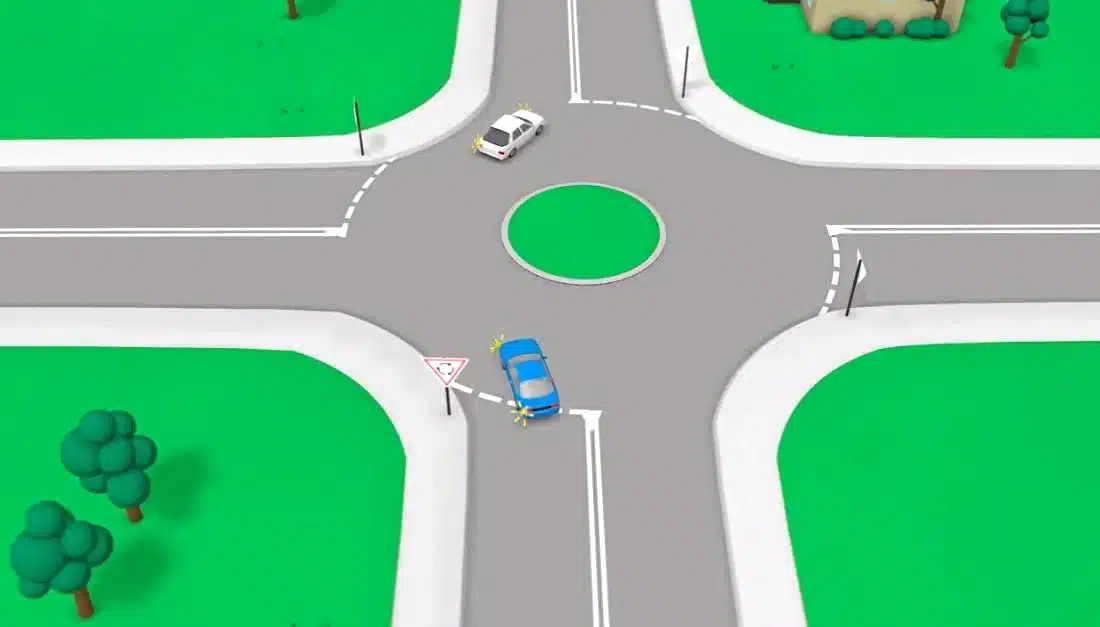
Intersections and Roundabouts
Navigating intersections and roundabouts safely is a crucial aspect of defensive driving. By understanding the right of way rules and following proper procedures, drivers can effectively manage these high-risk areas.
Right of Way Rules at Intersections:
1. Stop Signs: When approaching an intersection with a stop sign, come to a complete stop and yield the right of way to cross traffic. Proceed only when it is safe to do so.
2. Yield Signs: At intersections with yield signs, drivers must yield to traffic approaching from the main road.
3. Traffic Lights: Observe traffic lights and adhere to their signals. Green means go, yellow indicates caution, and red means stop. Always respect the right of way and avoid rushing through intersection lights.
Navigating Roundabouts Safely:
1. Approach Slowly: Reduce your speed when approaching a roundabout and be prepared to yield to any oncoming traffic.
2. Select the Correct Lane: Determine the appropriate lane based on your intended exit. Most roundabouts have multiple lanes, each designated for specific exits.
3. Yield to Traffic on the Right: As you enter the roundabout, yield to vehicles already inside. Wait for a safe gap before proceeding.
4. Maintain Speed and Lane Position: While inside the roundabout, maintain a consistent speed and stay in your designated lane until you reach your desired exit.
5. Use Indicators: Signal your intention to exit the roundabout by using your indicators. This alerts other drivers of your intended direction.
“Roundabouts provide a safer alternative to traditional intersections by reducing the severity and frequency of collisions.” – Traffic Safety Institute
key Takeaway: Navigating intersections and roundabouts safely requires understanding right-of-way rules, yielding properly, and following the right procedures. By adopting k53 defensive driving techniques, you can effectively manage these high-risk areas and reduce the likelihood of accidents.
Right of Way Rules at Intersections
At intersections, understanding right of way rules is crucial for ensuring safe and smooth traffic flow. Here are some important guidelines to follow:
1. Yield to vehicles already in the intersection: Whether you’re approaching a four-way stop, a traffic light, or an uncontrolled intersection, it’s essential to yield to any vehicles that have already entered the intersection. This promotes order and prevents accidents.
2. Observe traffic signals: Traffic lights and stop signs are designed to regulate right of way at intersections. Pay close attention to these signals and act accordingly. When the light turns green, proceed cautiously after checking for any oncoming traffic or pedestrians.
3. Give way to the right: If you arrive at an uncontrolled intersection where two vehicles reach the stop sign simultaneously, the general rule is to yield to the vehicle on your right. This helps keep the traffic flow organized and minimizes conflicts.
4. Pedestrians have the right of way: Always prioritize pedestrians when approaching an intersection. This means allowing them to cross safely before proceeding. Exercise extra caution, especially around school zones or busy pedestrian areas.
Remember, following these right of way rules helps prevent accidents and promotes efficient traffic movement at intersections.
key Takeaway: Understanding and adhering to right of way rules at intersections is essential for safe driving and smooth traffic flow.
Navigating Roundabouts Safely
Roundabouts can be intimidating for many drivers, but with the proper knowledge and techniques, you can navigate them safely and confidently. Here are some key tips to help you navigate roundabouts effectively:
1. Approach the roundabout with caution: Reduce your speed as you approach the roundabout and be prepared to yield to any oncoming traffic already in the roundabout.
2. Choose the correct lane: Determine which lane you need to be in based on your intended exit. Most roundabouts have multiple lanes, so make sure you’re in the appropriate lane well before you reach the roundabout.
3. Yield to traffic in the roundabout: As you approach the roundabout, yield to any vehicles already in the roundabout. Wait for a safe gap before entering.
4. Signal your intentions: Use your turn signal to indicate your exit as you approach the roundabout. This lets other drivers know your intentions and helps maintain a smooth flow of traffic.
5. Keep to the left: Once you’ve entered the roundabout, keep to the left and follow the circular path until you reach your exit.
6. Watch for pedestrians and cycles: Be aware of pedestrians and cycwhen maneuvering through the roundabout. Yield to them as necessary and always give them the right of way.
7. Stay in your lane: Maintain your lane position as you navigate the roundabout. Avoid changing lanes unless necessary and only do so when it’s safe.
Remember, roundabouts are designed to improve traffic flow and safety. By understanding and following these guidelines, you can confidently navigate roundabouts and contribute to a smoother driving
key Takeaway: Safely navigating roundabouts involves approaching with caution, choosing the correct lane, yielding to traffic, signaling intentions, keeping to the left, watching for pedestrians and cyclists, and staying in your lane. Understanding these tips will help you navigate roundabouts confidently.
Conclusion
Conclusion If you’re looking to pass your K53 defensive driving test, you need to be familiar with the advanced maneuvers specific to this licence. In this article, we covered the following topics: -The advanced defensive driving maneuvers for the K53 licence test -How to prepare for the K53 defensive driving test -The best time of day to take the K53 defensive driving test – tips for passing the K53 defensive driving test By reading this article, you’ll be well on your way to passing your K53 defensive driving test!

